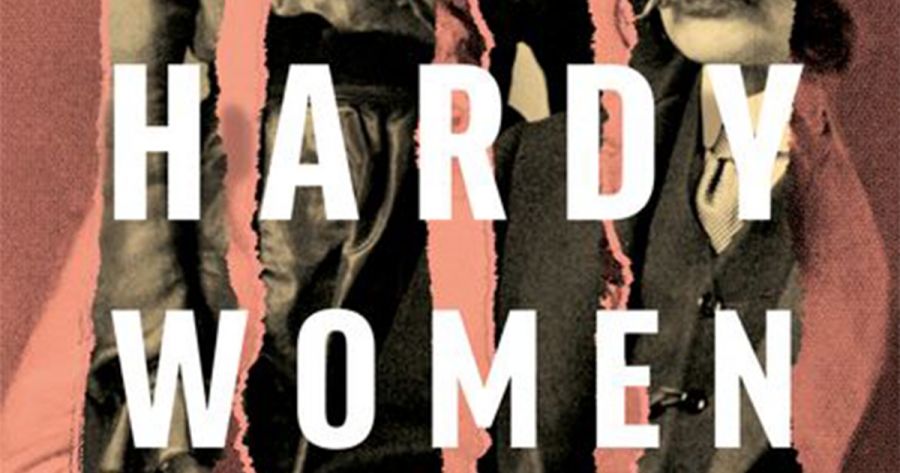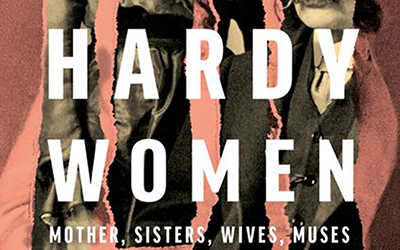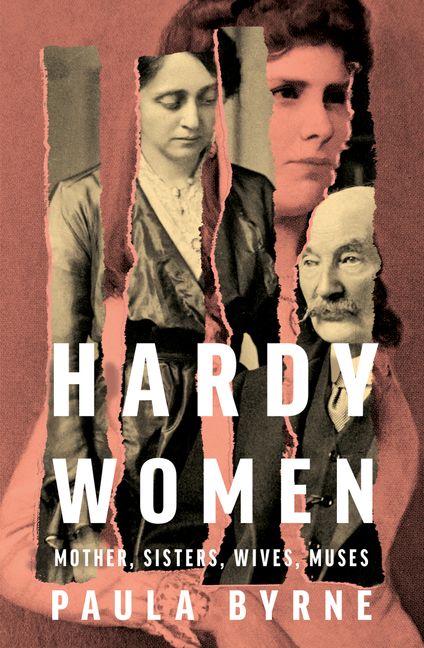
- Free Article: No
- Contents Category: Biography
- Review Article: Yes
- Article Title: What to think of Hardy
- Article Subtitle: Feminist biography as decoy
- Online Only: No
- Custom Highlight Text:
We look to literary biography to understand how works of literature came into being and made their way in the world. But how much can we learn about the processes of artistic creativity from biography when the public self of the author almost completely effaces the private self of the writer: when we are left wondering how this person, of all people, could have created the works that bear their name?
- Featured Image (400px * 250px):

- Alt Tag (Featured Image): Tim Dolin reviews ‘Hardy Women: Mothers, sisters, wives, muses’ by Paula Byrne
- Book 1 Title: Hardy Women
- Book 1 Subtitle: Mothers, sisters, wives, muses
- Book 1 Biblio: William Collins, £25 hb, 642 pp
- Book 1 Cover Small (400 x 600):

- Book 1 Cover (800 x 1200):

There have been many biographies of Hardy, and even the best of them leave us wondering who he really was. The surviving documentary evidence has by now been ransacked: eight volumes of letters, interviews with journalists, speeches and essays, and working notebooks; reminiscences and impressions of Hardy as a person; diaries and correspondence by his two wives; thousands of incoming letters; scrapbooks of press cuttings with his own corrections and annotations.
Much that might be revealing has been lost, however. Relatively few letters predate Hardy’s fortieth birthday. Always on his guard, he was not a confidential correspondent, and many letters are of a formal or business nature. Even his correspondence with literary women ‘friends’ in the nineties – especially Florence Henniker and Agnes Grove, with both of whom he was in love – was prudently circumspect. He later claimed that the love letters between himself and his first wife, Emma, during their courtship in the 1870s were comparable to those of the Brownings. Unfortunately, she destroyed most of them before she died suddenly in 1912, leaving Hardy, guilt-ridden, to discover and destroy her secret journal, dangerously entitled ‘What I Think of My Husband’.
Hardy was appalled by his discovery, and took fright at the prospect of anyone digging around in his private life when he was dead. In 1917, he took matters into his own hands, devising an elaborate subterfuge to compose his autobiography in secret and pass it off as a conventional memorial to a great public figure by a protective, competent, but unimaginative votary – his second wife, Florence. He went back through all his papers and compiled the work from snippets of old notes and letters that are joined together by an expressionless third-person narrative. Burning everything as he finished with it, Hardy produced a highly selective, dutifully dull, and sanitised self-ghosted biography.
Published in two volumes in 1928 and 1930, it was initially taken at face value, but the stratagem was soon uncovered. Would-be biographers were not deterred, however, even if the Life proved to be a formidable obstacle for them. If anything, Hardy has paid the price of being characterised as a man desperate to hide something. Low-born origins and class-ridden self-doubt? False modesty? Driving ambition? A sycophantic veneration of polite society? Unseemly voyeurism? Domestic tyranny and neglect? Wary biographers have been digging around for these and other deplorable failings for decades. But as they cannot well do without the Life, they often find themselves obliged to take Hardy at his word.
Hardy Women is the latest Hardy biography to fashion its subject from its biographer’s suspicions. Why, asks Paula Byrne, are so many important women in Hardy’s life absent from, sidelined in, or misrepresented by him in the ‘whitewashed version’ of his life? Byrne sets out to answer her question with Emma Hardy’s telling remark about her husband in 1894: ‘He understands only the women he invents – the others not at all.’ The ‘others’ range from beautiful strangers glimpsed on omnibuses in London, to fugitive figures like Lizzie Downton, the midwife at Hardy’s birth, to women who appear and reappear, often as ghosts, throughout his life: Julia Martin, mistress of the estate close to Bockhampton; Hardy’s earliest loves, Louisa Harding, Eliza and Jane Nicholls, and Cassie Pole; and (looking ahead to Tess’s fate) two women, Martha Brown and Mary Channing, whose public executions were primal events for Hardy. The most important women in Hardy’s life, however, were members of his family: his grandmother, who mesmerised young Tom with the old folkways, superstitions, and stories of the neighbourhood; his formidable mother, Jemima, who imbued her sickly boy with the fatalism of the country poor and the social and intellectual ambition of someone determined to pull her family up into the middle classes; and his sisters, Mary and Kate, whose lives of loneliness and hardship as rural schoolteachers are not as well known as the life of Tryphena Sparks, the cousin Hardy loved (also a schoolteacher and part-model for Sue Bridehead).
There was some justice in Emma Hardy’s complaint. Since the runaway success of Tess of the d’Urbervilles (1891), she had had to contend with glamorous new rivals for her husband’s attention and affection. The titled ladies who made a pet of him at their crushes and dinners were one thing, but Emma’s greatest rival in those years was Hardy’s own creation – Tess herself. What Emma didn’t know was that her day would come again; but alas, she would be dead. Her grieving husband, ashamed of himself for falling out of love with his preposterously dressed, snobbish, uninhibited, angry wife, raised the ghost of the ‘woman much missed’: the Emma of their early wooing on the wild north coast of Cornwall, in the magnificent ‘Poems of 1912-13’ (distressing and disgusting the second Mrs Hardy).
Hardy Women comprises three parts. The first covers the years up to Hardy’s marriage in 1874; the second turns to his heroines, from Bathsheba to Tess; and the final part takes the story from the 1890s through to his death in 1928. Written for a general readership in a lively colloquial style, it moves briskly along, aided by the brevity of its seventy-odd chapters, each (bar one) titled after a woman, a heroine, or a female epithet or image. Byrne maintains the tempo with a strategic use of short sentences and sentence fragments (especially when she needs a catchy hook to hold the reader’s attention), and by a structure that frees her from chronological sequence as she nimbly picks up and lays down the many stories she has to tell.
Agility is not originality, however, and Hardy Women is not as innovative as Byrne asserts. It relies heavily on the work of other biographers – Robert Gittings’s sceptical exposé of Hardy in the 1970s, Michael Millgate’s authoritative life’s work, and Claire Tomalin’s time-torn man (2006) – and restricts itself to published sources almost exclusively. Its thumbnail readings of Hardy’s work are occasionally insightful, but for the most part summary and superficial. Byrne’s claim that ‘the full extent of [Hardy’s] evasions, his deliberate omissions and distortions, can be revealed for the first time’ is misleading.
Byrne also repeatedly finds herself straining to fit her two stories together: the story of the women whose names are given to each chapter, and the story of Hardy’s life. These points of tension are revealing. ‘There are many excellent “cradle-to-grave” biographies of Thomas Hardy,’ she writes: ‘We do not need another one.’ Yet that is more or less what we get. For all its insistence on reclaiming lost lives, and for all the dignity Byrne restores to these brave, spirited, resistant women, it sometimes seems as if they are decoys for yet another biography of the man Henry James scorned as ‘the poor little Thomas Hardy’.


Comments powered by CComment